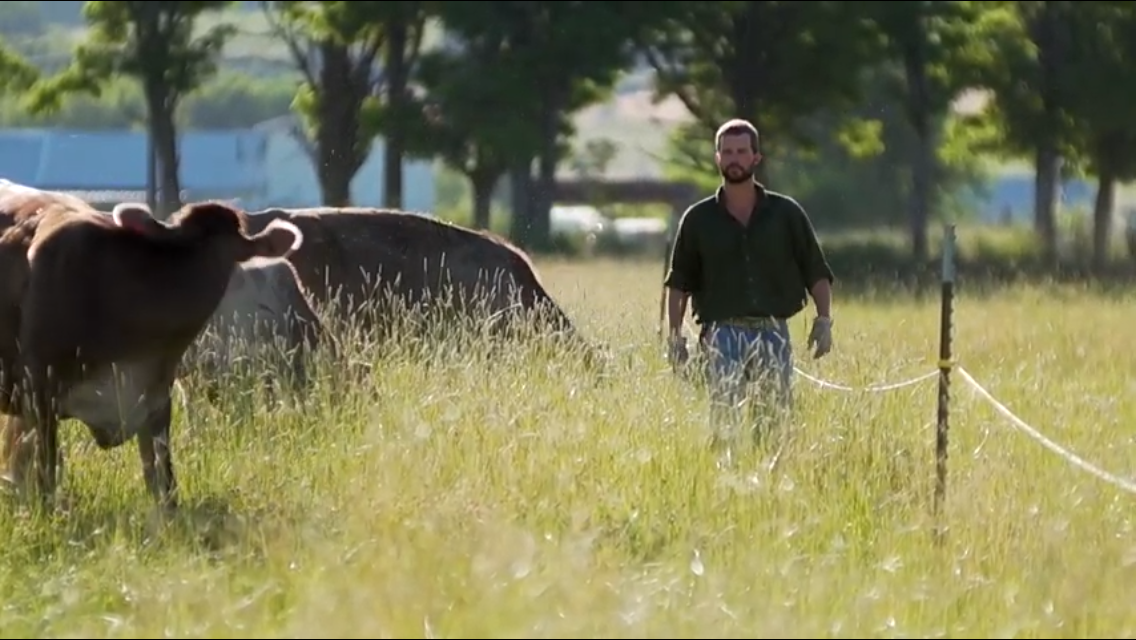2020 has been a stressful year for many, but be encouraged because there are steps we can take to thrive -- mentally, physically, and spiritually.
Jonathan laying on a pile of weeds, pushed by Thomas!
Play
Modern lifestyles and occupations have diminished a lot of opportunities to move our bodies and play. A good place to start is to go outside and copy what your kids or grandkids are doing. If they jump, skip, or run, follow suit!
Seize and be in the moment. Play helps us to be present in mind, body, and spirit. Exercise doesn’t have to be a drudge. Make it play and you’ll want to do it because it’s fun.
Farm “work” in the winter -- AKA Aaron and Jonathan playing in the snow.
Even in cold or snowy weather, take advantage of the beautiful snow and embrace the season we are in. An old Swedish proverb says “There’s no such thing as bad weather, only bad clothes.”
Cold exposure is known to have health-promoting effects, such as improved circulation and thermo-regulation as well as lowering inflammation and assisting the immune system. A short walk in the cold each day is enough exposure to gain some of the benefits.
Touch
Physical contact increases oxytocin and dopamine in our brains. Oxytocin strengthens our relationship bonds while dopamine helps us feel pleasure and satisfaction. Spending time with loved ones and pets does a lot of good to our mental and physical well-being. Hugs are essential for us and our loved ones!
Sleep
We all know we need more rest, and it can be hard to come by unless we make time for it. Our body needs to reset, and most Americans are not getting enough sleep. Aim for 7-9 hours, more if you’re feeling unwell.
Lack of sleep increases risk for obesity and insulin resistance, leads to workplace errors, motor vehicle accidents, and is known to affect mood disorders like depression and anxiety. Prioritizing sleep makes you more productive for all of your waking hours!
Supercharge your sleep by improving your sleep environment:
Make your bedroom as dark as possible
Cover light sources (I’ve had good luck with black electrical tape)
Use blackout curtains
Keep your bedroom at a cool but comfortable temperature
Avoid screens for at least an hour before bed and make your bedroom a screen-free haven. Blue-light from our devices (and all artificial lights) impede melatonin production by affecting our pineal gland.
Sunrise on the farm.
Sunshine
In the wintertime, most people don’t get outside enough because of the cold weather. Getting adequate sunshine, especially the morning sunrise is truly key to optimal health.
Morning sunlight sets our circadian rhythm, which regulates many of our body’s processes. Sunlight energizes our mitochondria, the tiny engines inside our cells. Our mitochondria take energy from our food and turn it into usable energy for all of our cells to expend. Mitochondria sustain every aspect of our bodies, and supporting our mitochondria supports our whole being.
Spending time outside in the fresh air and sunshine is such a mood-boosting and energizing activity. Any time I’m feeling in a funk, a brisk walk outdoors helps me recenter.
Quiet Reflection and Meditation
While the holiday season can be full of appointments and to-dos, it’s important to make time to reflect and connect. Prayer, meditation, and journaling are all practices that bring mental stillness and clarity.
Daily stresses can often feel overwhelming. Prayer and meditation help us gain a long-term view that puts our momentary worries into proper perspective. If you are feeling stressed in the upcoming weeks, take a minute for yourself. Take a breath. Pray. Hug your loved ones. Reconnect.
When it comes to our health, we have the power to choose health promoting habits so that we can thrive. May your year in 2021 be full of health and vitality!


























